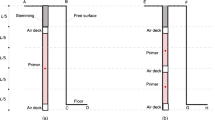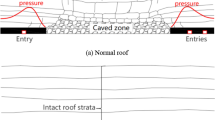Abstract
Except for very deep-seated deposits, open cast mining method has been recognized as the safest and most productive mode for mining minerals. Ever growing demand in minerals and coal has compelled the mine operators to increase the size of mine, which has resulted in an increasing trend towards large capacity open cast projects. Explosives and blasting techniques play a significant role in efficient opencast mining operations. There have been constant technological developments towards safer, faster, economical and more efficient blasting systems. Further, globally increased competitiveness has necessitated to carryout blasts in such a way that the desired degree of fragmentation is achieved in the primary blast, with minimum undesired side effects such as ground vibration, air blast/noise, flyrock, generation of oversize boulders, formation of toe, and over break or back break. Hence, the ultimate objective of the blasting engineer is to ensure that the blasts are carried out in an eco-friendly manner. This paper presents a case study of limestone mine where a controlled blasting was conducted near a green structure of wagon tippler (at 2 m) being constructed for foundation work of belt conveyor as the mine management wants to double the existing production. This paper deals with controlled blast design and its implementation using electronic detonators with signature hole technique.
Similar content being viewed by others
References
Banda, R. and Rhodes, N. (2005) Electric delay detonators–a unique solution to pertinent mining problems, Jour. S African Inst. Min. Metal., v.105, no.9, pp. 615–618.
Blair, D.P. and Armstrong, L.W. 1999. The spectral control of ground vibrations using electronic detonators. Internat. Jour. Blasting Fragmentation, v.3, no.4, pp.303–334.
Blair, D.P. (2004) Charge weight scaling laws and the superposition of blast vibration waves. Fragblast, v.8, pp.221–239.
Cardu, M., Oerste, P., Pettinau, D. and Guidarelli, D. 2013. Automatic measurement of drilling parameters to evaluate the mechanical properties of soils. Amer. Jour. Appld. Sci., v.10, no.7, pp.654–663.
Carter, R. A., 2002. Plugging in to digital detonation: electronic sequencing and initiation systems can improve blasting performance and reduce neighbour complaints. Rock Products, pp.28–30.
Chavez, R., & Chantry, R., 2003. Actual benefits from new technologies related to constant timing with electronic detonators and uniform energy control. In: EFEE world conference on explosives and blasting, pp.303–311.
Cho, S. H., & Kaneko, K., 2004. Influence of the applied pressure waveform on the dynamic fracture processes in rock. International Jour. Rock Mech. Min. Sci., v.41, pp.771–84.
Clerico, M., & Patrucco, M., 1993. A method for the prediction of peak sound pressure level related to opencast blasting. Appld. Acoustics, v.40, no.1, pp.47–56.
Dent, N. L., 1994. A precise, reliable and easy to use and cost effective electronic delay detonator. Proc. 5th High Tech Seminar: State of art blasting technology, Instrumentation and Explosives applications, USA, pp.775–778.
Donze, F. V., Bouchez, J., & Magnier, S. A., 1997. Modeling fractures in rock blasting. International Jour. Rock Mech. Min. Sci., v.34, pp.1153–63.
Grobler, H.P. 2003. Using Electric Detonators to Improve All around blasting performance–Fragblast, v.7, no.1. pp.1–12.
Hoshino, T., Mogi, G., & Shaoquan, K., 2000. Optimum delay interval design in delay blasting. Fragblast, v.4, no.2, pp.139–148.
Houg, J. H., 2001. Electronic detonators: the future of optimum colliery. Proc. 10th High Tech Seminar: State of art blasting technology, Instrumentation and Explosives applications, USA, pp.305–318.
Jensen, R. P., & Preece, D. S., 1999. Modeling explosive/rock interaction during presplitting using ALE computation methods. In: Proceedings of the sixth international symposium on rock fragmentation by blasting. South African Inst. Min. Metal., pp.199–202.
Kara, S., Adamson, W. R., Reisz, W. J., & Trousselle, R., 2014. The Latest Generation of the Electronic System Enhanced Safety and Productivity. Procedia Engineering, v.83, pp.432–440.
Kay, D., 2000. Digital Blasting–An opportunity to revolutionise mass underground mining. Proceedings of Seminar on Mass Min, Queensland, Australia, pp.155–161.
Mckinstry, R., Floyd, J., Bartley, D., 2002. Electronic detonator performance evaluation. The Journal of Explosives Engineering, pp.12–22.
Minchinton, A., & Lynch, P. M., 1996. Fragmentation and heave modeling using a coupled discrete element gas flow code. In: Mohanty B. (ed) Proc. fifth Internat. Symp. rock fragmentation by blasting. Rotterdam, Balkema, pp.71–80.
Mishra, A. K., 2013. Unlocking possibility of blasting near residential structure using electronic detonators. Jour. Geol. Soc. India, v.81, pp.429–435.
Mishra, A. K., & Gupta, R. N., 2012. Rapid excavation of tunnels using innovative drilling and blasting techniques. Spathis & Gupta (ed), Tunnelling in Rock by Drilling and Blasting, Taylor & Francis Group, London, pp.15-22.
Munjiza, A., Latham J. P., & Andrews K. R. F., 1999. Rock fracture and fragmentation model in coupled analysis of explosive induced rock fragmentation. In: Proc. sixth Internat. Symp. rock fragmentation by blasting, South African Inst. Min. Metal., pp.187–90.
Paine A. S., & Please C. P., 1994. An improved model of fracture propagation by gas during rock blasting—some analytical results. Internat. Jour. Rock Mech. Min. Sci., v.31, pp.699–706.
Paventi, M., & Mohanty, B., 2002. Mapping of blast-induced fractures in rock. In: Proceedings of the seventh international symposium on rock fragmentation by blasting, Fragblast, 7, Beijing, China4, pp.166–172.
Prasad, U., Mohanty, B., & Nemes J., 2000. Dynamic strength and fragmentation in selected rocks under impact loading. In: Girard J, et al., (ed), Proceedings of the fourth North American rock mechanics symposium—NARMS, Rotterdam, Balkema, pp.577–82.
Roy, M. P., 2013. Investigation into the effect of delay time, total charge and effective weight of explosives per delay on blast induced ground vibration, PhD Thesis, Indian School of Mines, Dhanbad.
Roy, M. P., Singh, P. K., Mishra, A. K., & Jawed, M., 2014. Impact of total explosive weight detonated in blasting round on blast induced ground vibration. World of Mining–Surface & Underground, v.66, No.3, pp.177–182.
Silva-Castro, J. J., 2012. Blast vibration modeling using improved signature holes technique for bench blast, PhD Thesis, University of Kentucky.
Singh, S.P., 2000. New trends in drilling and blasting technology. Internat. Jour. Surface Min., Reclam. Environ., v.14, No.4, pp.305–315.
Spathis, A.T., 2010. A brief review of measurement, modelling and management of vibrations produced by blasting. Vibrations from blasting: Proc. Monographs in Engg., Water and Earth Sciences, Taylor & Francis Group.
Whitaker, K., Chiappetta, F. R., & Stump, B., 2001. Effects of VOD, explosive column length and type of explosive on ground vibration characteristics over distance. Proc. BAI 10th HighTech Seminar on state of art blasting technology, instrumentation and explosives, Nashville, Tennessee, USA, pp.u3–u66.
Yang, R., Scovira, D. S., & Patterson, N. J., 2010. An integrated approach of signature hole vibration monitoring and modeling for quarry vibration control. Rock Fragmentation by Blasting, Sanchidrián (ed), Taylor & Francis Group, London, pp.597–605.
Yang, R., & Scovira, D. S., 2008. A model of peak amplitude prediction for near field blast vibration based on non-linear charge weight superposition, time window broadening and delay time modeling. Blasting and Fragmentation, v.2, No.2, pp.91–115.
Yuill, G., & Farnfield, R., 2001. Variations in Vibration Signals from single-hole quarry blasts. Proceedings of the 27th Annual Conference on Explosives and Blasting Techniques, Orlando, FL, pp.309–317.
Yuill, G., Birch, W., & Farnfield, R., 2002. Isolating single hole vibration signals from multi-hole shots. Proceedings of the 28th Annual Conference on Explosives and Blasting Techniques, Las Vegas, NV, pp.231–242.
Zhu, Z., Mohanty, B., & Xie, H., 2007. Numerical investigation of blasting-induced crack initiation and propagation in rocks. International Journal of Rock Mechanics and Mining Sciences, v.44, No.3, pp.412–424.
Author information
Authors and Affiliations
Corresponding author
Additional information
Acknowledgement Authors are very thankful to Mr. S Banerjee, BBS Manager and the management of Orica Mining Services for extending necessary help and support during project execution.
Rights and permissions
About this article
Cite this article
Mishra, A.K., Nigam, Y.K. & Singh, D.R. Controlled blasting in a limestone mine using electronic detonators: A case study. J Geol Soc India 89, 87–90 (2017). https://doi.org/10.1007/s12594-017-0563-5
Received:
Accepted:
Published:
Issue Date:
DOI: https://doi.org/10.1007/s12594-017-0563-5




